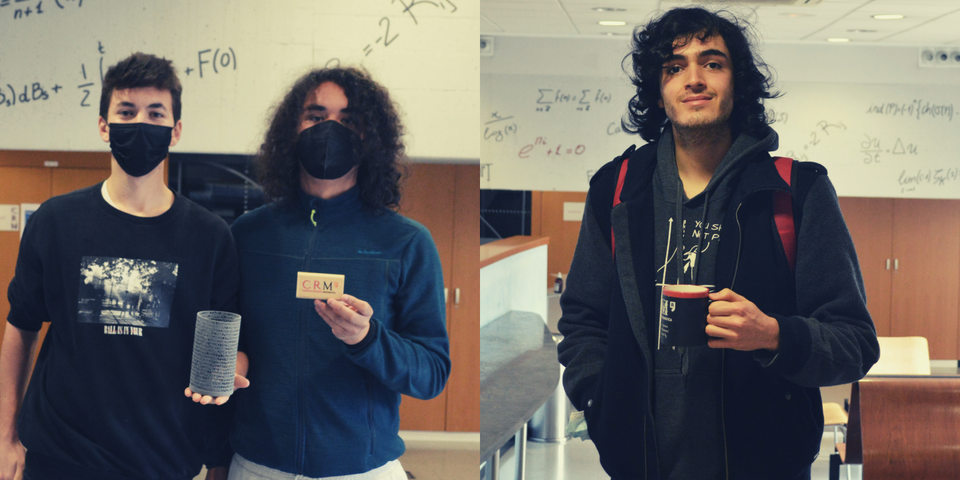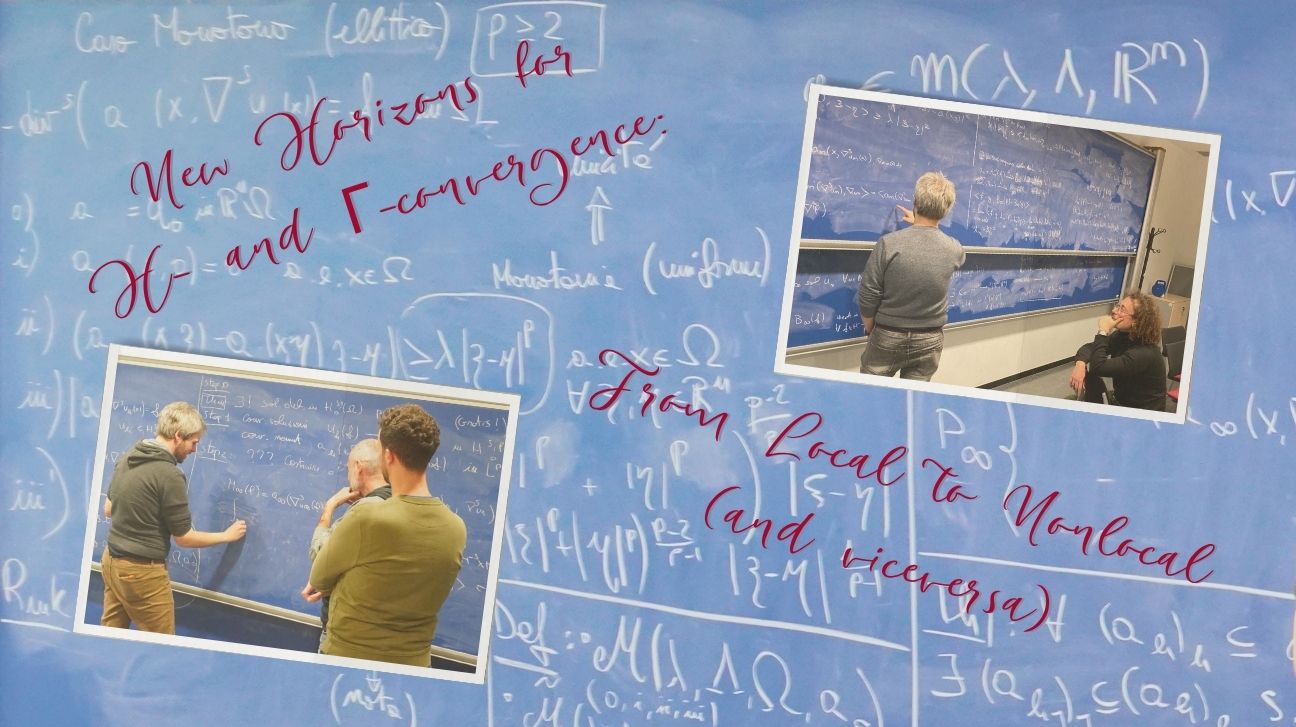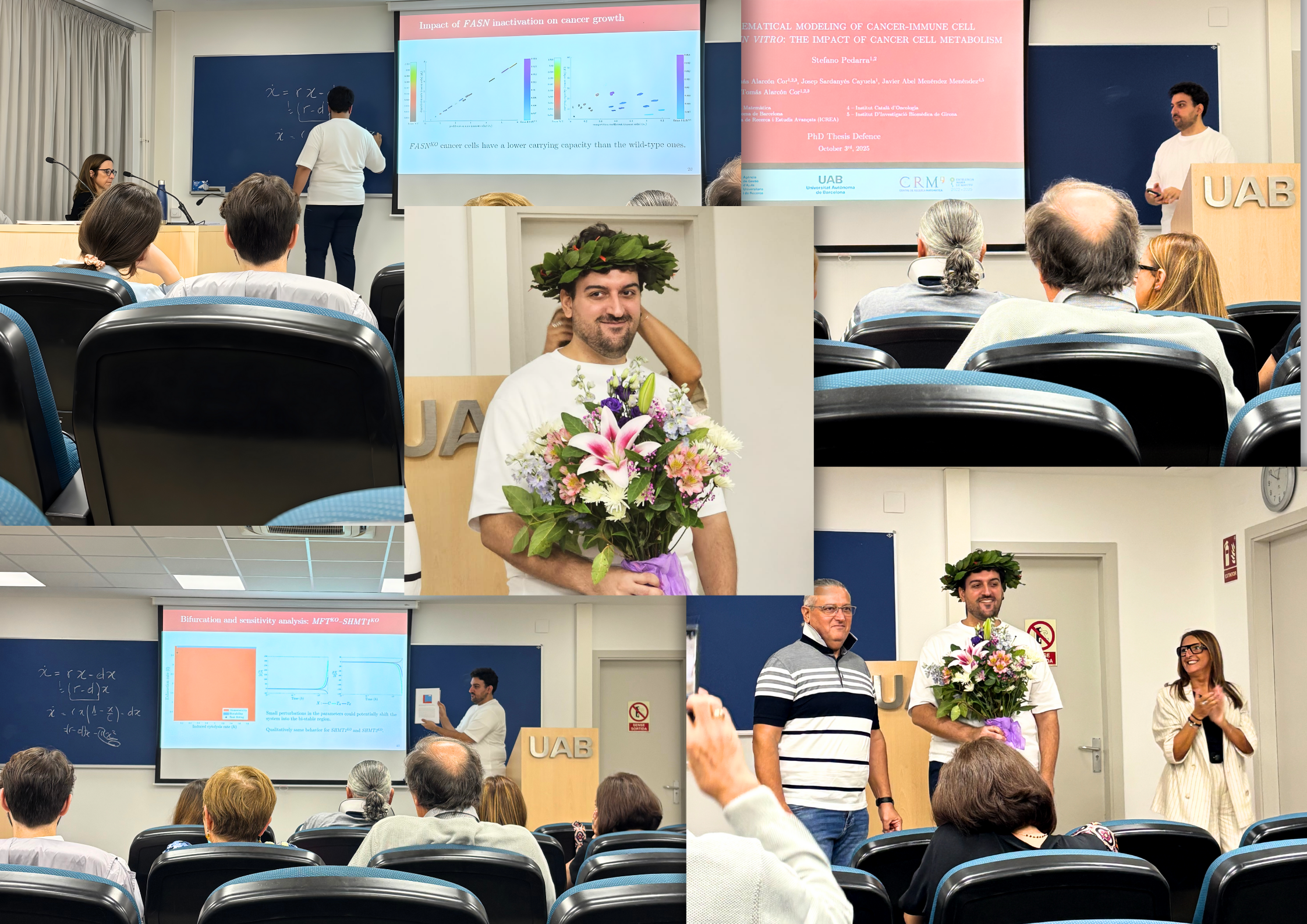During the last Pi Day, the CRM served up a mathematical challenge addressed at students from the UAB Faculty of Science and Biosciences.

Every March 14th (3/14 in the month/day format) mathematicians and math enthusiasts all over the world celebrate Pi Day, named after the constant (known by the Greek letter “π”) that represents the ratio of a circle’s circumference to its diameter and its fascinating history. The date, which also commemorates Albert Einstein’s birth date and was the day Stephan Hawking died, was designated in 2019 by UNESCO as the International Day of Mathematics.
The day was first celebrated in 1988 at San Francisco’s Exploratorium, started by physicist Larry Shaw. Traditions for Pi Day include eating pie (pun very much intended due to the fact that “pi” and “pie” are homophones in English /paɪ/) and reciting from memory the decimals of the number π (if you want a crack at the record, the current Guinness World Record is held by Rajveer Meena of India, who, in 2015, recited 70.000 digits of Pi). This year the CRM joined the celebration with a mathematical challenge aimed at the student community here at the UAB Science and Biosciences Faculty, launched on the same day via the CRM’s social networks, with prizes for the first three people to bring us the correct solutions.
You go on a beach holiday, but you get bored and your mathematician friend helps you with a problem. She/He gives you two empty buckets, one with a capacity of 3/4 L of water and the other with a capacity of π / 4 L of water. He then asks you how you would end up with a bucket containing 1/4 L of water with an error of less than 1%? How many water transfers do you need to get what she/he has asked for?
Three students (two form mathematics and one from biology) got the solution right and claimed their reward.

In praise of Pi
Pi is an irrational number, which means that it cannot be represented as a fraction, and its digits go on forever with no recurring patterns. This means that Pi is infinite, and its exact value can never be calculated (an approximation such as 3.14 or 22/7 is often used for everyday calculations). Currently, about 62.8 million digits of Pi have been discovered, with a group of researchers from the University of Applied Sciences of the Grisons in Switzerland holding the record.
The Pi number has been known for almost 4.000 years, since the times of ancient civilizations such as the Egyptians and Babylonians. The first calculation of π was done by Archimedes of Syracuse (287–212 BC), one of the greatest mathematicians of the ancient world. Over the ensuing centuries, Chinese, Indian, and Arab mathematicians extended the number of decimal places known through tedious calculations, rather than improvements on Archimedes’ method. It was not until 1706, however, that the Greek π letter was used to identify the number, with Philologist William Jones first using the symbol. Later on, it was Leonhard Euler who popularized the use of the symbol among the scientific community in 1737.
Famous mathematicians such as Fibonacci, Newton, Leibniz, and Gauss, have worked on the number, calculating its digits and using it in numerous areas of mathematics.

CRM Comm Team
Anna Drou | Paula Lomascolo | Pau Varela
CRMComm@crm.cat
Xavier Ros-Oton among the 65 most cited mathematicians in the world
ICREA professor at the Universitat de Barcelona and CRM affiliated researcher Xavier Ros-Oton appears on Clarivate's Highly Cited Researchers 2025 list, which this year reinstates the mathematics category after two years of exclusion.Citations are a strange way to...
New Horizons for H- and Γ-convergence: From Local to Nonlocal (and viceversa)
The researchers Maicol Caponi, Alessandro Carbotti, and Alberto Maione extended the H- and Γ-convergence theories to the setting of nonlocal linear operators and their corresponding energies. The authors were able to overcome the limitations of classical localization...
Diego Vidaurre joins the CRM through the ATRAE talent programme
Diego Vidaurre has joined the Centre de Recerca Matemàtica through the ATRAE programme, bringing his expertise in modelling spontaneous brain activity across multiple data modalities. His work focuses on understanding how the brain’s intrinsic dynamics shape...
El CRM a la Setmana de la Ciència: una ruta entre dones, formes i pensament
El CRM va participar en la 30a edició de la Setmana de la Ciència amb una ruta guiada que va combinar les biografies de dones matemàtiques amb obres d'art del centre, connectant ciència, història i creació artística.El 12 de novembre, el Centre de Recerca Matemàtica...
Stefano Pedarra Defends his PhD Thesis on the Interaction between Tumour Cells and the Immune System
Stefano Pedarra has completed his PhD at the Centre de Recerca Matemàtica with a thesis exploring how tumour-cell metabolism shapes the immune system’s ability to fight cancer. His work brought mathematics and biology into direct conversation, from building models to...
Els estudiants participants a la prova de preselecció de Bojos per les Matemàtiques visiten el CRM
La prova de preselecció de Bojos per les Matemàtiques va reunir estudiants de tot Catalunya a la UAB i al CRM, amb presentacions a càrrec de Montse Alsina, presidenta de la Societat Catalana de Matemàtiques, Núria Fagella, degana de la Facultat de Matemàtiques i...






